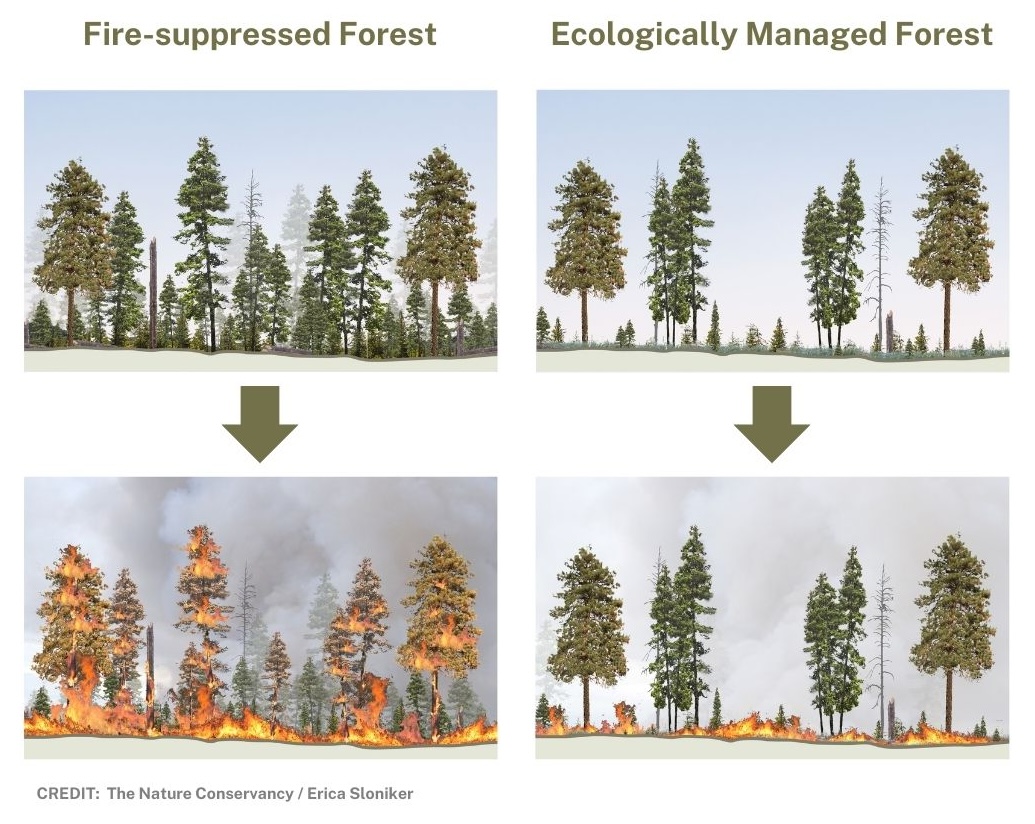Forests naturally thin over time—some trees grow bigger while others die off as they compete for sunlight, water, and nutrients. In fire-prone forests, frequent fire plays an important role in this process by clearing out smaller plants and trees to prevent overcrowding and creating a mix of forest types and open areas like grasslands.
But in many places, this natural process has been disrupted. In the dry forests of the western U.S., areas that haven’t burned in 50 to 100 years likely have too many trees packed together. These crowded trees struggle to get the resources they need, making them weaker and more vulnerable to insects, disease, and fire. Additionally, these conditions can allow fire to spread faster, hotter, and over larger areas.
When forests become too dense, fires can become dangerously intense. That’s why thinning is sometimes needed before burning, especially near communities, to make fire safer and landscapes more resilient.
Forest Thinning
Forestry experts may recommend thinning forests to reduce fire risks and create healthier forests. Thinning involves carefully removing some trees to give the remaining ones more space, sunlight, and water, making them stronger and more resistant to drought and fire.
Thinning should always be followed by good fire—like prescribed or cultural burns—to maintain the benefits and keep forests in balance.

Frequently Asked Questions
For many hundreds of years, dry western forests benefited from more frequent, low intensity fires which helped reduce the density of vegetation and dry fuels in forests. For the last 100 years, many forests have had no fire. This resulted in many forests becoming overcrowded. Thinning smaller trees to reduce fuels and create growing space for larger trees in these dry forests is generally thought to be a beneficial practice – especially when the thinning is followed up with prescribed fire.